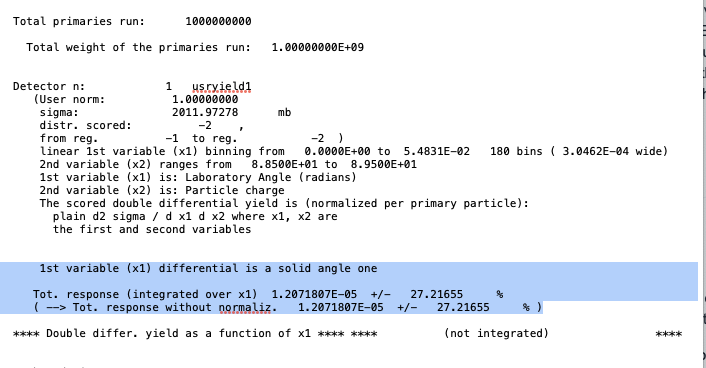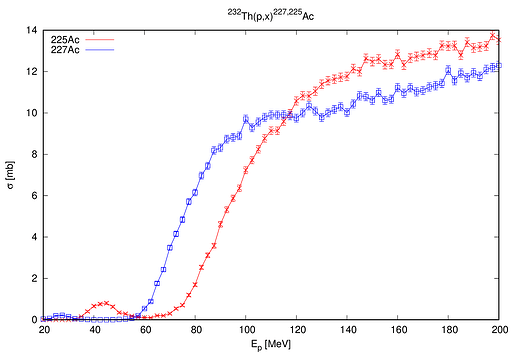Dear expert,
I hope all is well.
I tried to get the cross sections of Ac225 and Ac227 as given in this paper :https://doi.org/10.1016/j.apradiso.2021.109676.
I use the same set of this paper:
- A rectangular solid representing a 232Th foil target with a thickness of 0.0125 cm;
- The projectile was a cylindrical source with a uniform distribution across a 0.5 cm radius;
- Beam energy is 80 MeV (this time).
- Same as MCNP6 simulation, 10^9 projectile particles were simulated.
In the sum.lis file of Ac225, the cumu yield is 1.2071807E-05 +/- 27.21655% as shown below
And in the sum.lis file of Ac227, the cumu yield is 2.2131646E-05 +/- 21.21212 % as shown below
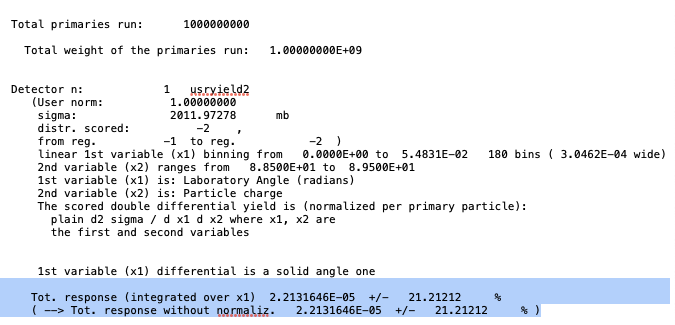
Then the number of stars generated per beam particle is 7.64E-04 as shown below
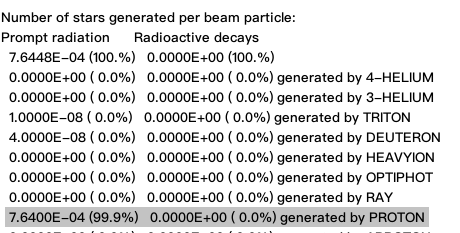
As referred to Production cross section of 67Ga and 68Ga from interaction of Li7 beam on Cu target, I divide the cumu yield 1.2071807E-05 and 2.2131646E-05 by 7.64E-04, I get values of 0.016 and 0.029.
So I think the cross sections of Ac225 and Ac227 are 0.016 mb and 0.029 mb, respectively. But the paper give values of around 6 mb and 7 mb (see the experiment data as shown below).
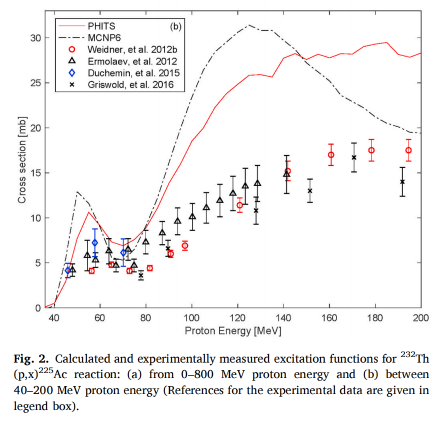
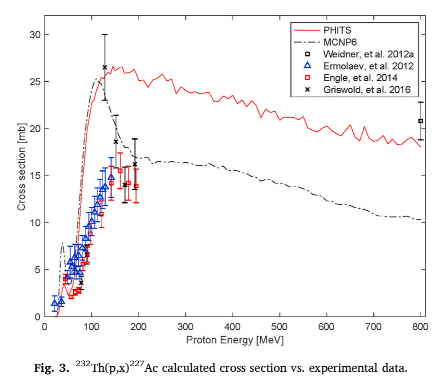
With this difference, I have some questions:
- Is there anything wrong with my input file?
- I didn’t add IONTRANS、EMFCUT and LAMBIAS card as riya(whom I referred to) do, is it necessary in my case?
- In the cumu value of 1.2071807E-05 +/- 27.21655%, what does 27.21655% mean? Is it the relative error of 1.2071807E-05?
protonth.inp (1.7 KB)
protonth_21_sum.lis (20.3 KB)
protonth_22_sum.lis (20.3 KB)
Sorry for so much questions!
Best regards,
zhen
